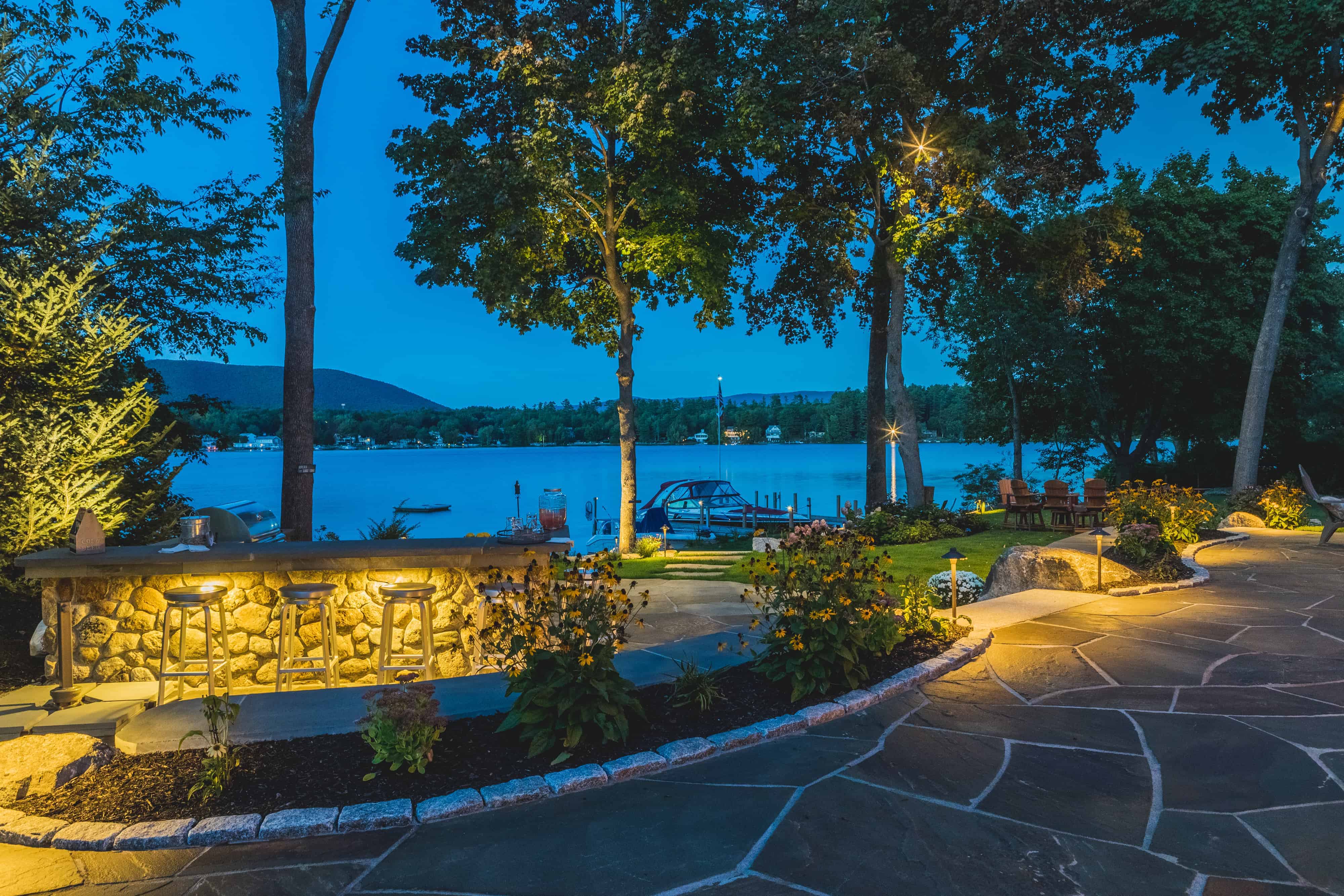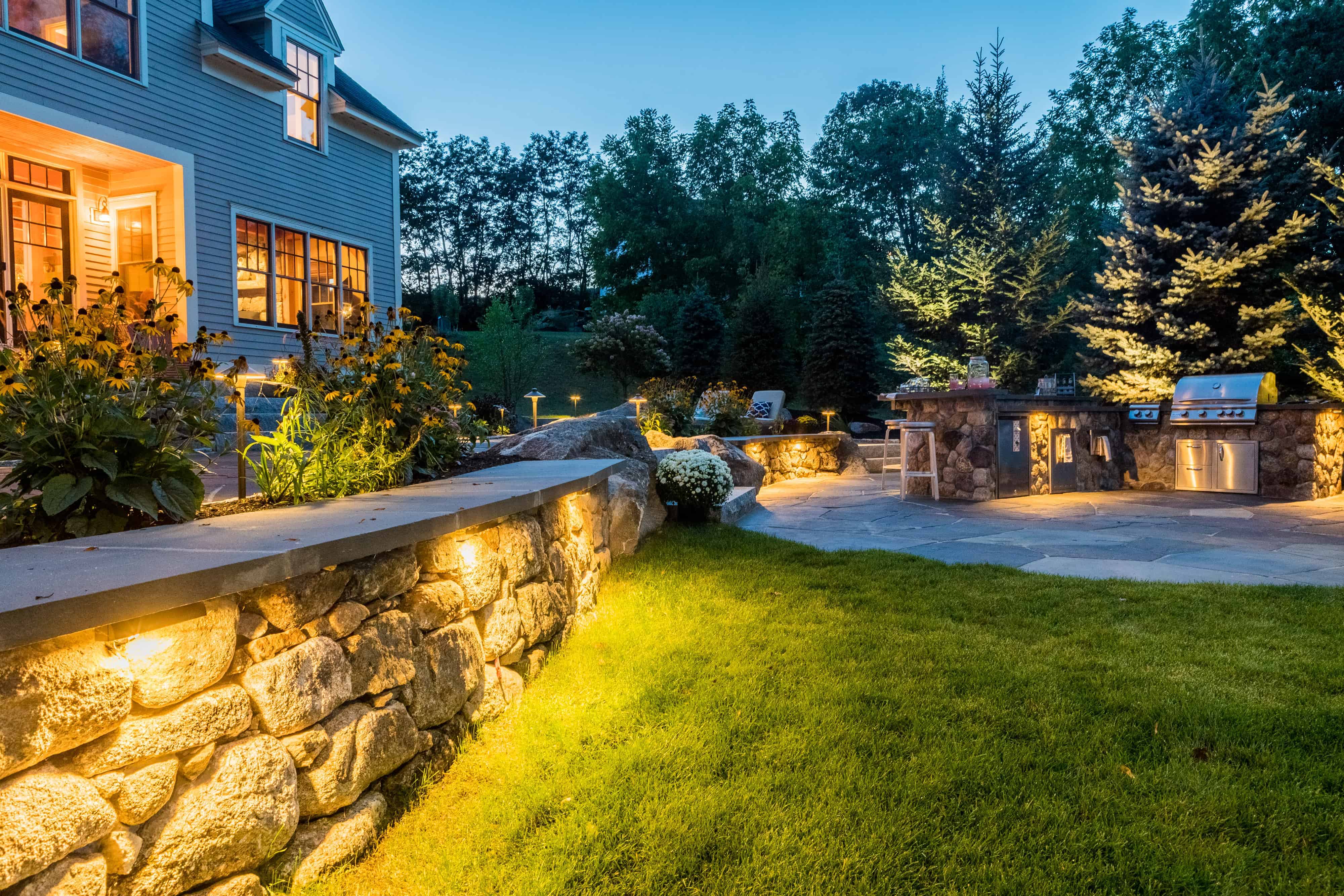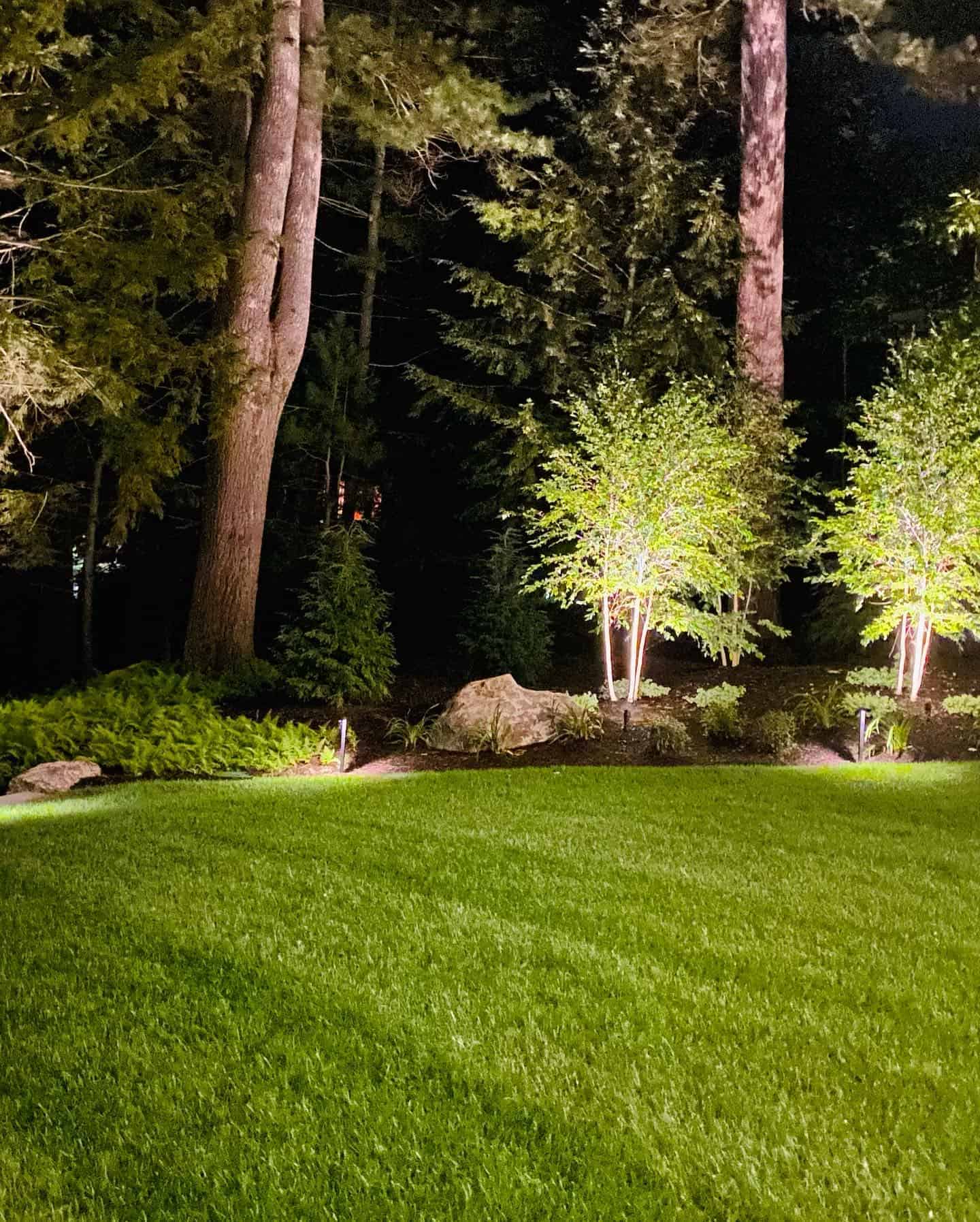Winter is gone, and spring is finally here. The days are getting warmer and longer, and you may find yourself wanting to spend more time outside. If you’re looking for a way to enhance your outdoor living space and add value to your property, you might want to consider adding a pavilion.
What Is a Pavilion?
A pavilion is an outdoor structure with a roof that is typically open on all sides and supported by columns or posts. They are customarily placed on top of existing patios or decks. Pavilions are designed to provide shade from the sun and offer protection from rain for the seating or patios and decks below them. They’re incredibly useful spaces and since they offer protection from weather, they are a great place for a fireplace or outdoor kitchen. Pavilions can be built in a wide range of designs, styles, and sizes.
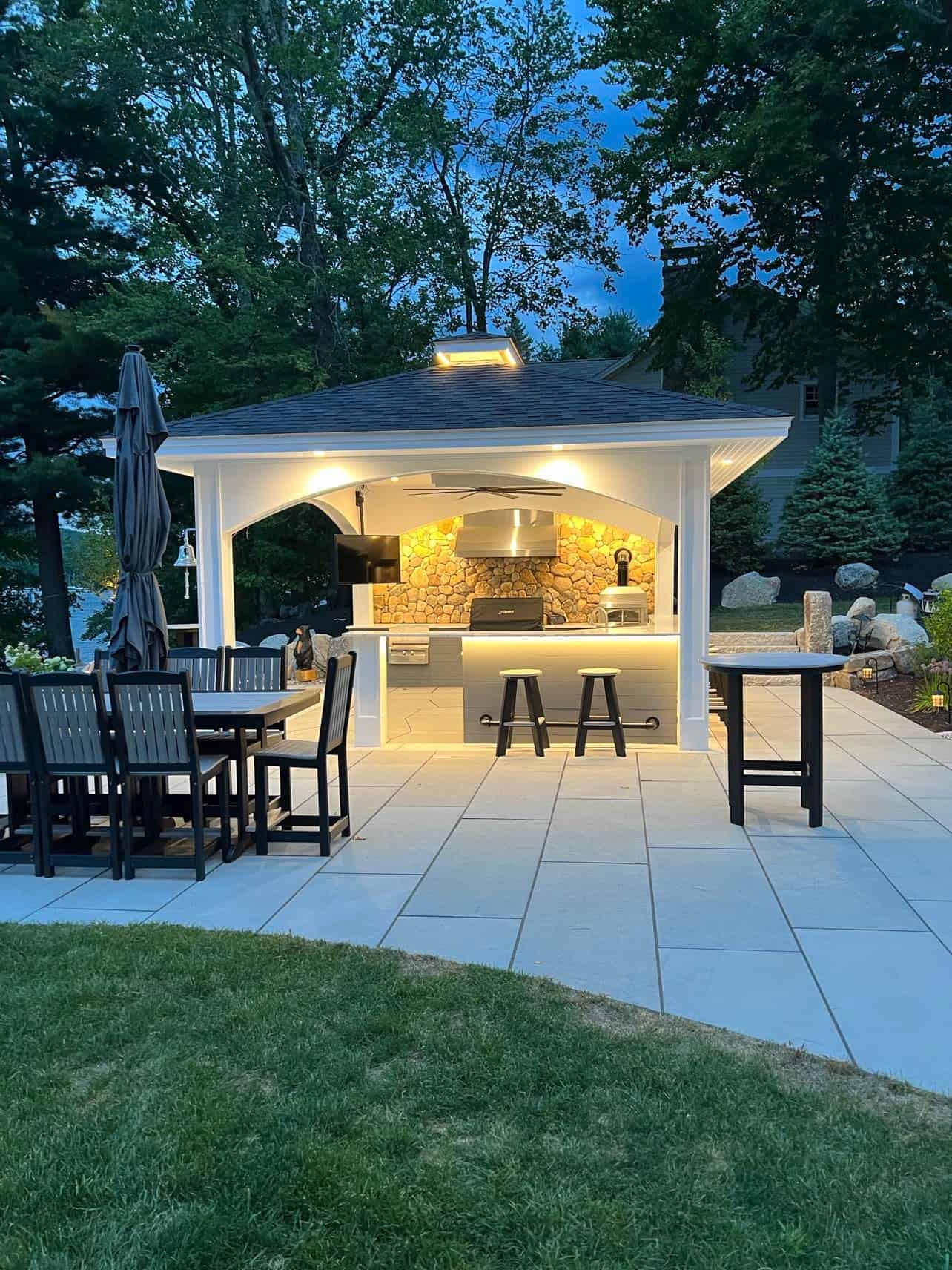
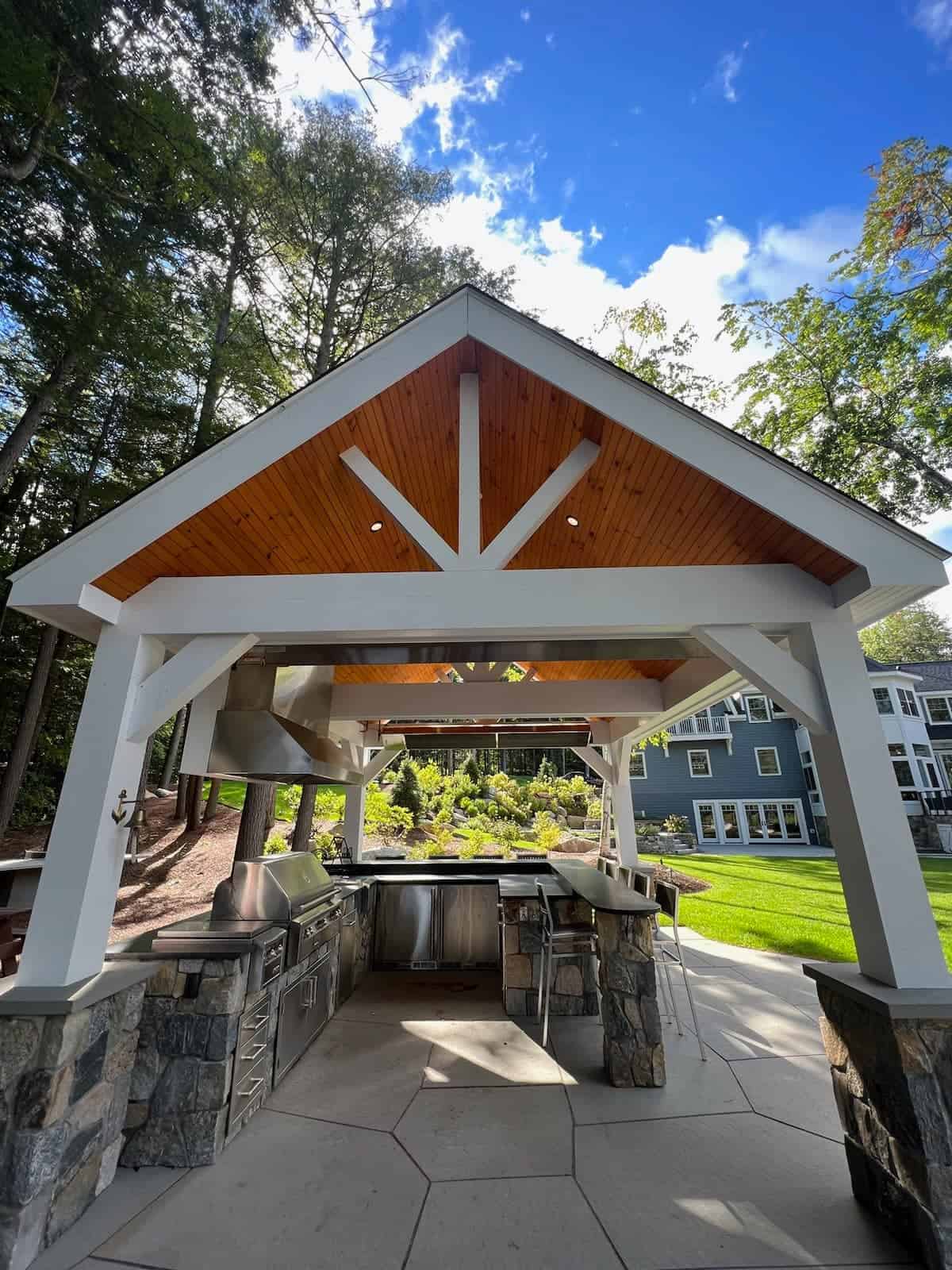
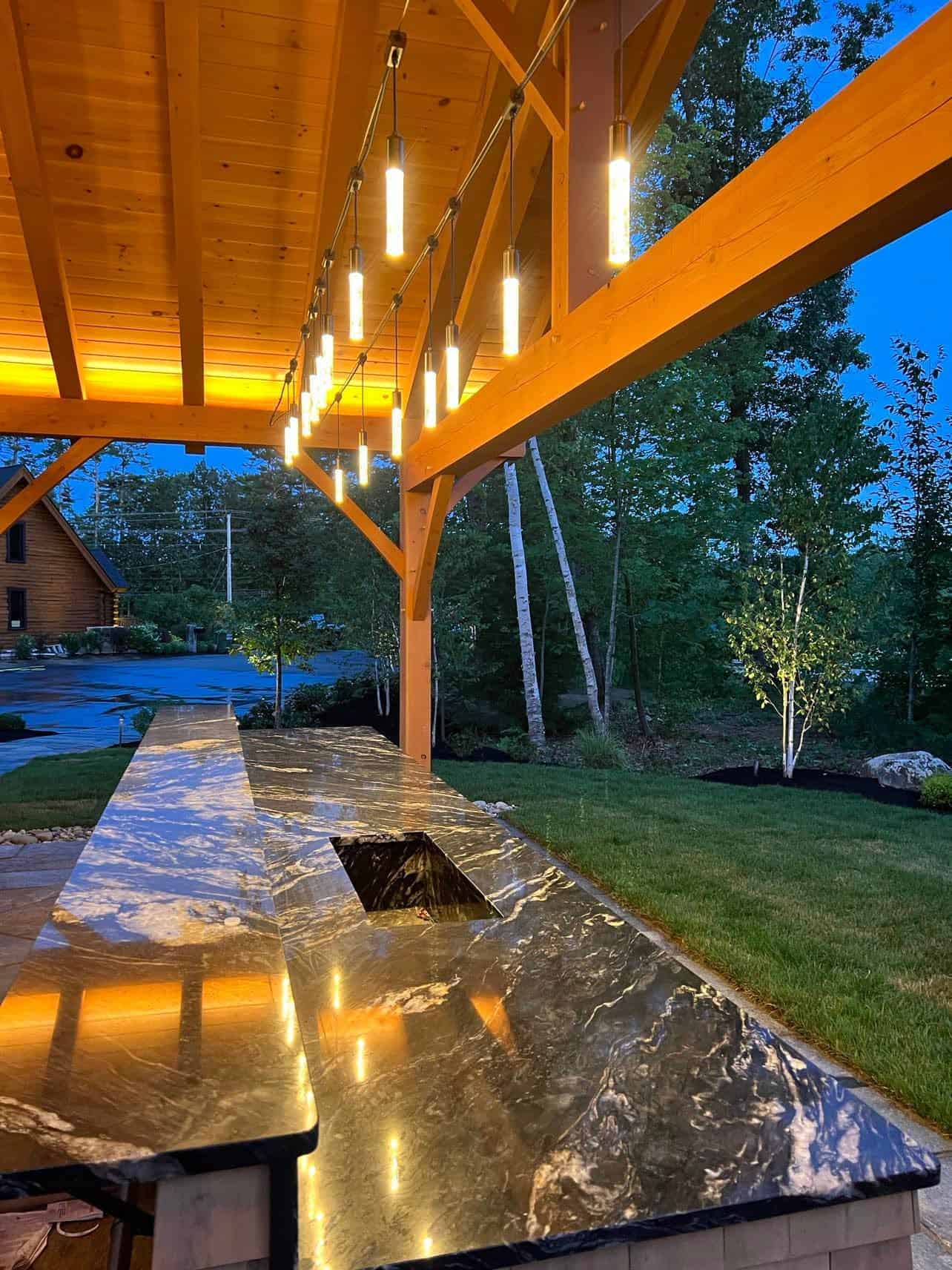
Why Add a Pavilion?
Think of a pavilion as an extension of your home; it’s an extra outdoor room, which can be used for a variety of purposes depending on your lifestyle and preferences, such as:
- Outdoor entertaining: A pavilion can provide a space for outdoor entertaining and hosting gatherings. It can be designed to house an outdoor kitchen, bar, grill, and pizza oven. Add tables and chairs to create an outdoor dining room.
- Relaxation and recreation: A lounge area with comfortable furniture can offer a peaceful retreat for relaxation and recreation, such as reading a book, a space for meditation or practicing yoga, or playing games with family and friends. Pavilions make great spaces for outdoor pool, poker, or other gaming tables.
- Protection from the elements: A pavilion offers shade and protection from the sun, wind, and rain, allowing you to enjoy the outdoor space even in less-than-ideal weather conditions. A pavilion can also be used as a protective roof over a hot tub or spa and makes a great place for a fireplace.
- Aesthetic appeal: Pavilions can be designed to complement the architectural style of your home and add visual interest to the surrounding landscape. They can be situated to showcase beautiful views or landscaping features, as well as add privacy.
- Increased property value: Building a pavilion can add value to your property, as it provides an additional living space and can enhance the overall appeal of the landscape.
Designing Your Pavilion
You’ll want your pavilion to tie in with your landscaping and add to your home’s overall aesthetic. There are many pavilion designs and styles from which to choose. Some common pavilion designs include:
- Square or rectangular is the most common shape and features a shingled or metal roof and four or six posts.
- A double tiered roof has become popular and adds nice visual interest to a patio or deck.
- A hex bell roof pavilion is an elegant style, recalling the old bandstands on the town commons.
- The open gabled look has exposed beams and high arches and has a log cabin look.
- A rough-cut cedar style pavilion is similar to the open gabled look and is also reminiscent of a log cabin.
With a range of designs and styles available, pavilions can be customized to fit your specific needs and preferences and enhance your enjoyment of the outdoors, making them a versatile and functional addition to any property.
We have a full design and build team and would love to help you explore the benefits of adding a pavilion to your property. We’re here to help you create the right design for your landscape and lifestyle. Please call us at 603.707.0630 or email us to get started.


